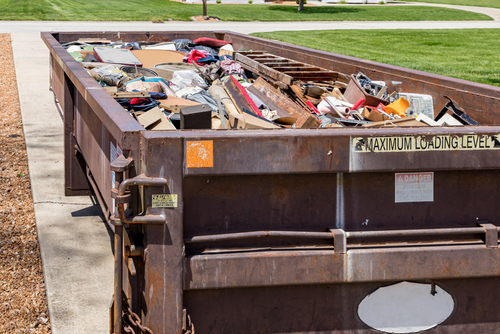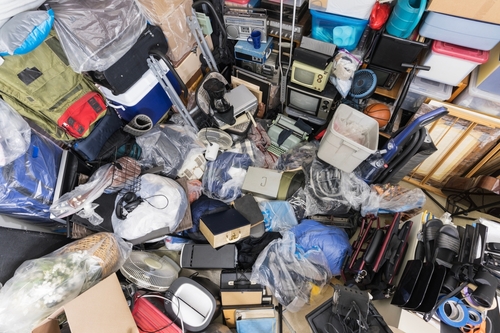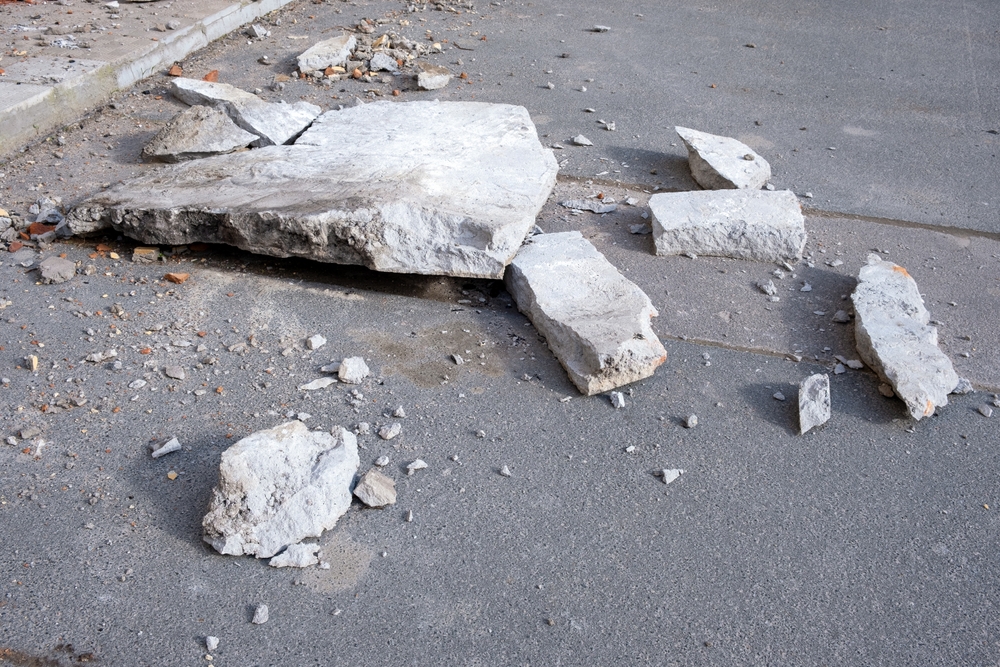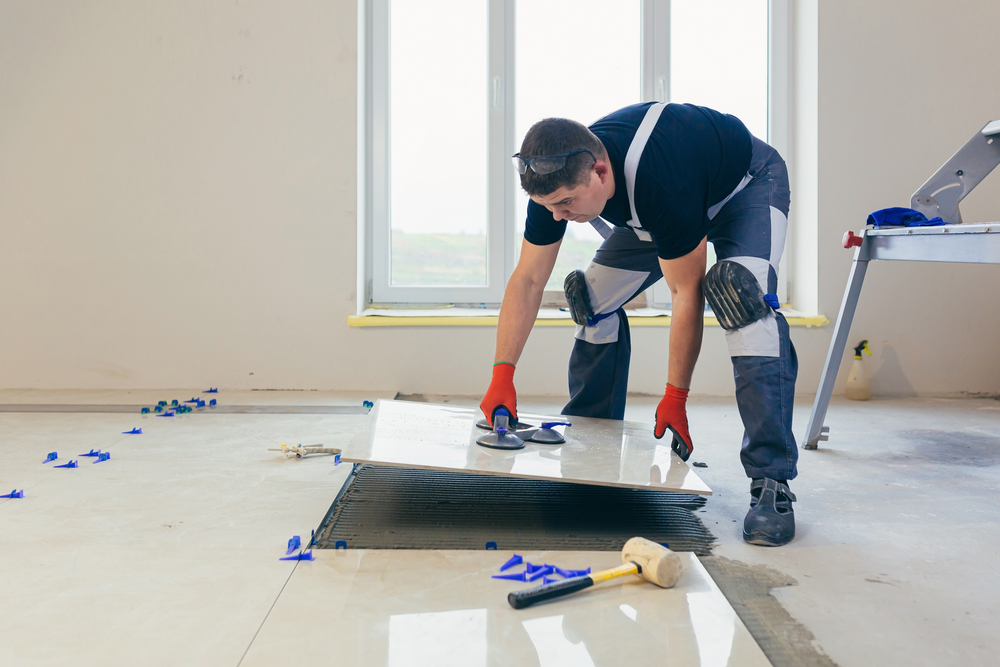If you have ever asked, I am a Hoarder, Where do I Start, recognizing that you have a hoarding problem is a brave first step toward reclaiming your space and improving your quality of life. Hoarding is a complex issue that involves the excessive accumulation of items, difficulty discarding possessions, and significant distress or impairment. You may feel overwhelmed by the clutter that has taken over your living areas, but it’s important to understand that with the right strategies and support, you can overcome hoarding behaviors. Start by focusing on the safety of your environment—reduce the risk of fire and ensure that you’re able to navigate your home safely.
As you begin to address your hoarding, remember that organization is key. Break down the task into manageable steps, setting small, achievable goals that will help you avoid feeling overwhelmed. The emotional impact of discarding possessions can be significant, so approach the process with compassion for yourself, and consider reaching out for support from friends, family, or professionals if needed. To aid in the disposal of accumulated items, consider getting a residential dumpster rental—it’s a practical solution to efficiently manage the clutter you’re ready to let go of.
 Hoarding can transform your home into an unhealthy living space, posing significant risks to your physical well-being. Below are the specific physical dangers you need to be aware of as a hoarder.
Hoarding can transform your home into an unhealthy living space, posing significant risks to your physical well-being. Below are the specific physical dangers you need to be aware of as a hoarder.
 Understanding the intricate relationship between mental health and hoarding is crucial for managing this condition. Hoarding disorder is a recognized mental health condition that can severely impact your life.
Understanding the intricate relationship between mental health and hoarding is crucial for managing this condition. Hoarding disorder is a recognized mental health condition that can severely impact your life.
 When seeking to address your hoarding behavior, you have two primary avenues: professional help tailored to your individual needs and community-based support that connects you with others sharing similar challenges.
When seeking to address your hoarding behavior, you have two primary avenues: professional help tailored to your individual needs and community-based support that connects you with others sharing similar challenges.
Key Takeaways
- Acknowledge hoarding behavior and prioritize safety and navigation in your home.
- Set manageable goals for decluttering and seek support as needed.
- Utilize practical disposal solutions like dumpster rental during the clean-up process.
Understanding Hoarding
When you face challenges with an excess accumulation of items and a persistent difficulty in parting with them, you might be experiencing a hoarding disorder. This section will guide you through its definition, the symptoms, and the underlying causes and risk factors.Defining Hoarding Disorder
Hoarding disorder is recognized as a distinct mental health condition. If you struggle with an overwhelming need to save items irrespective of their actual value and feel distressed at the thought of discarding them, this could be indicative of hoarding disorder. It can significantly impact the usability of living spaces, creating an environment that hinders daily function.Symptoms and Recognizing Hoarding Behaviors
Observing behaviors like excessive clutter, inability to organize possessions, and severe anxiety when attempting to discard items signifies that symptoms of hoarding may be present. It typically begins around the age of 15 to 19 and can progress with age. If your living space is compromised or your social interactions are impacted due to accumulated possessions, you’re likely dealing with hoarding behaviors.Causes of Hoarding and Risk Factors
Several factors contribute to the development of hoarding disorder. A family history of hoarding increases your susceptibility, implicating a potential genetic component. Hoarding can also be a response to stressful life events. It’s often associated with other mental health conditions such as depression, anxiety disorder, and OCD (Obsessive-Compulsive Disorder). Recognizing these causes can be a crucial step toward seeking help.The Emotional Impact of Hoarding
Hoarding can profoundly affect your emotional state, leading to intense feelings of shame and significant stress, which often radiates outward, impacting social interactions and family relationships.Shame and Social Isolation
The stigma associated with hoarding can lead to deep feelings of shame which may cause you to withdraw from social activities. You might avoid having visitors or attending gatherings out of fear that others will judge your living situation. This self-imposed isolation can compound feelings of loneliness and social isolation.Anxiety and Stress Associated with Clutter
Living among excessive clutter can trigger chronic stress and anxiety. As piles accumulate, the overwhelm can intensify, possibly leading to decision-making paralysis about what to keep or discard. This constant state of stress can elevate your stress levels, disrupting your overall emotional well-being.Impact on Family and Relationships
Hoarding doesn’t just affect you – it also takes a toll on family and relationships. Loved ones may feel helpless or frustrated, which can strain or sever bonds. Friends and family often bear the emotional burden as well, sometimes leading to tension within the home and contributing to an environment fraught with depression and other mental health issues.The Physical Dangers of Hoarding
 Hoarding can transform your home into an unhealthy living space, posing significant risks to your physical well-being. Below are the specific physical dangers you need to be aware of as a hoarder.
Hoarding can transform your home into an unhealthy living space, posing significant risks to your physical well-being. Below are the specific physical dangers you need to be aware of as a hoarder.
Unsanitary Living Conditions
Your possessions can quickly turn into clutter, creating unsanitary living conditions that can compromise your health. Stacks of items can prevent regular cleaning, allowing for the accumulation of dust, mold, and pests. An environment like this can trigger allergies and respiratory problems.- Health Hazards:
- Mold growth leading to respiratory issues
- Pest infestations causing disease transmission
Fire Hazards and Health Risks
Fire hazards are a serious concern in homes affected by hoarding. Excessive items can block exits and impede firefighters in an emergency. Clutter close to heat sources can easily ignite, and a high volume of materials can fuel a fire, making it spread quickly and more dangerously.- Key Points:
- Blocked exits hindering emergency escape
- Cluttered spaces increasing fire spread and severity
Injuries and Falls
The chaos in a hoarder’s home significantly elevates the risk of injuries and falls. Navigating through cluttered hallways and over piles of belongings can lead to trips, falls, and even being trapped underneath fallen items, posing immediate danger to your physical safety.- Risks:
- Tripping hazards from clutter
- Serious injury from falling objects
Organizing Your Space
Tackling a cluttered space requires a clear plan and the motivation to change your environment. It involves two key phases: Starting the decluttering process and then employing strategies for keeping your possessions organized.Starting the Decluttering Process
To begin decluttering, you need to establish where and how to start. It’s often easiest to start small, focusing on one area at a time to avoid feeling overwhelmed. Begin by clearing a path in your most used areas such as the kitchen, bathroom, and sleeping areas. This step ensures safety and creates a noticeable improvement in your living conditions. For papers and other items that are often challenging to organize, sort them into different piles. Consider these categories:- To Keep: Important documents, cherished letters.
- To Shred: Sensitive information that’s no longer needed.
- To Recycle: Outdated papers without personal information.
Strategies for Organizing Possessions
Once the decluttering phase is under way, it’s essential to develop a system for organizing your remaining possessions. Implementing grouping strategies can be particularly effective. Start grouping items by their type or by the room they belong in. Use storage solutions like shelves, boxes, and labels to maintain an organized space. Here are some tips:- Categorize items to keep like with like.
- Use clear, labeled containers for easy identification.
- Establish a designated spot for each item to limit clutter.
Mental Health and Hoarding
 Understanding the intricate relationship between mental health and hoarding is crucial for managing this condition. Hoarding disorder is a recognized mental health condition that can severely impact your life.
Understanding the intricate relationship between mental health and hoarding is crucial for managing this condition. Hoarding disorder is a recognized mental health condition that can severely impact your life.
Common Associated Disorders
Hoarding disorder is often observed in conjunction with other mental health conditions. Notably, many individuals with hoarding disorder also experience anxiety disorders, depression, or obsessive-compulsive disorder (OCD). In fact, research suggests a significant overlap, especially with OCD, which is characterized by repetitive thoughts and compulsive behaviors.The Role of Stress and Anxiety
Stress and anxiety are intrinsic to hoarding disorder. You may feel extreme stress when faced with the decision to discard items. This stress can exacerbate hoarding behaviors, creating a cyclical pattern where anxiety both contributes to and results from the accumulation of possessions.Treatment Options
Several treatment options are available and can be tailored to your unique situation. Cognitive Behavioral Therapy (CBT) is a common and effective treatment, focusing on changing the thoughts and behaviors that contribute to hoarding. Additionally, working with a therapist who specializes in hoarding disorder can be beneficial. In some cases, medication that treats underlying anxiety or depression may also be part of the treatment plan. Remember, recognizing that you need help is a courageous first step, and seeking appropriate treatment can significantly improve your quality of life.Overcoming Hoarding Behaviors
Beginning the journey to overcome hoarding starts with understanding the importance of addressing the disorder and recognizing the beneficial treatments available. Your willingness to change and the support you seek are pivotal in the path to recovery.Building Self-Motivation
To initiate the change, building self-motivation is key. You must believe in the possibility of change and visualize a life less encumbered by possessions. Start by writing down the reasons you want to change—consider aspects like improved safety, relationships, and quality of life. This list will serve as your personal motivation touchstone.Cognitive Behavioral Therapy Benefits
Cognitive behavioral therapy (CBT) is integral in treating hoarding behaviors. CBT helps you understand your compulsion to save or collect items and works towards altering these tendencies. By engaging in CBT, you’ll learn organizational skills and how to make decisions about what to keep and what to discard, directly addressing the disorganization that contributes to hoarding.Practical Steps to Recovery
The route to recovery involves actionable steps:- Recognize that you have a problem worth tackling.
- Seek professional help, such as help for hoarders, to guide you through the structured treatment plan.
- Begin discarding items incrementally; start with those less emotionally charged and gradually move towards more challenging items.
- Establish simple organizational systems to prevent future accumulation.
The Role of Family and Friends
In addressing hoarding disorder, your family and friends play a crucial role. Their support can come in various forms, from emotional encouragement to practical assistance, ensuring that the path to recovery is less isolating and overwhelming.Providing Support and Understanding
The journey to overcoming hoarding disorder begins with a strong network of support, where you feel understood. Family and friends can offer a listening ear, conveying empathy for the psychological challenges you face. Whether it’s acknowledging your struggles without judgement or celebrating small victories with you, this emotional backing is vital. Groups like Hoarding UK can guide your loved ones in offering the right kind of support.- Active listening: A key to showing understanding.
- Positive reinforcement: Celebrate small steps of progress.
Boundaries and Intervention
However, there is a delicate balance to strike. While support is necessary, your loved ones also need to establish clear boundaries to avoid enabling the hoarding behaviors. They may sometimes need to intervene, which should be done with compassion and respect for your autonomy. An organized approach can involve setting limits on acquiring new items or setting up a schedule for sorting and cleaning. Friends and family must communicate their intentions clearly and reassure you of their unwavering support during this process. Information from ServiceMaster provides further insight into taking steps for self-help which could be beneficial in an intervention context.- Setting boundaries: Create rules to prevent enabling.
- Organized intervention: Work together to tackle hoarding behaviors.
Legal and Financial Implications
When addressing hoarding disorder, it’s crucial to understand that beyond the personal stress and impact on quality of life, there are legal and financial challenges to consider. These can affect the resolution process and determine the resources that may be required.Navigating Legal Challenges
- Legal Issues: Your hoarding behavior can lead to significant legal challenges. These include housing violations, zoning laws, and building code infractions. Failure to comply can result in fines or even eviction. It is essential to comprehend the legal issues associated with hoarding and work proactively to address them.
- Health and Safety Regulations: Ensuring the safety of the living environment is mandatory. Accumulation of items can pose fire hazards and obstruct clear pathways, which violates health codes and can lead to legal action.
- Tenant Rights: If you’re renting, understand your rights as a tenant. You may request reasonable accommodation from your landlord to address your hoarding behavior while complying with lease agreements.
Financial Issues and Hoarding
- Financial Strain: Hoarding can also place a substantial financial burden on you. The cost of storing and managing accumulated possessions can be high, and failure to resolve hoarding issues may lead to additional financial penalties.
- Cost of Cleanup: Professional hoarding cleanup services ensure regulation compliance but can be expensive. It’s important to factor these costs into your planning for a healthy living environment.
- Insurance Implications: Excessive hoarding can lead to increased insurance premiums or even policy cancellation. It is vital to take steps to mitigate these financial risks, including cleaning up and seeking help with hoarding behaviors.
Resources for Hoarders
 When seeking to address your hoarding behavior, you have two primary avenues: professional help tailored to your individual needs and community-based support that connects you with others sharing similar challenges.
When seeking to address your hoarding behavior, you have two primary avenues: professional help tailored to your individual needs and community-based support that connects you with others sharing similar challenges.
Finding Professional Help
Seeking professional treatment from a mental health professional is a critical step for many hoarders. The form of therapy often recommended is cognitive-behavioral therapy (CBT), which can help you understand your hoarding behavior and develop strategies to overcome it. Professionals can also determine if medication may be beneficial. For expert organization and decluttering, you can reach out to professionals who specialize in hoarding disorder, such as those found via the National Association of Productivity & Organizing Professionals.Community Support and Online Resources
Support groups provide a community of individuals who understand the intricacies of hoarding. Local in-person groups offer direct community engagement, while online resources can connect you with a broader network. The Hoarding UK support groups are an excellent starting point. Additionally, websites such as Children of Hoarders offer resources for both hoarders and their families to navigate the complexities of the disorder together.Maintaining Changes and Preventing Relapse
Successfully managing hoarding behavior involves consistent effort and clear strategies to establish a structured environment. Your journey doesn’t end with decluttering; it’s crucial to prevent a relapse and maintain changes to ensure long-lasting results.Long-Term Strategies for Organization
To sustain an organized living space, develop a routine maintenance plan and arrange your belongings in clearly labeled spaces. Here’s a simple framework to keep your organization on track:- Weekly: Sort mail and recycle unnecessary papers.
- Monthly: Review and donate items you no longer use.
- Annually: Deep clean and re-evaluate your storage solutions.
Monitoring Progress and Setbacks
Keep a log or calendar to track your progress and note any triggers that might lead to potential setbacks. For example:- Trigger: Receiving promotional items
- Action: Establish a rule to discard or donate these items within a day.
Frequently Asked Questions
In this section, you’ll find answers to common questions about approaching hoarding, creating a plan for cleanup, and offering support to loved ones.How can I begin the process of cleaning when I have a hoarding problem?
Start small by focusing on a single area of your space. Aim for manageable goals and progress from there, establishing a routine that allows you to build on small successes each day.What steps should I follow to create a hoarding cleanup plan?
Formulate a strategy that addresses the situation in stages. Begin by sorting items into categories, determining what to keep, donate, sell, or discard. For detailed steps, consult sources offering structured checklists.In what ways can I get assistance for hoarding cleanup?
Professional cleaning services specialize in hoarding situations, and they can provide the necessary resources and personnel. Additionally, therapy such as Cognitive Behavioral Therapy (CBT) can assist in addressing the psychological components of hoarding.How can I help a family member who is struggling with hoarding?
Approach the situation with empathy and understanding. Offer your support and consider seeking professional help or intervention if necessary. Always ask for permission before touching or moving their possessions.What are the underlying causes of hoarding behaviors?
Hoarding often stems from emotional challenges, such as anxiety, trauma, or depression. It is a complex disorder that can be linked to poor mental well-being and requires compassionate, professional treatment to manage.What does the categorization of hoarding in stages entail?
The categorization of hoarding in stages helps to understand the severity of the hoarding behavior. It ranges from mild clutter to severe hoarding, which can significantly impact one’s living conditions and quality of life. Identifying the stage can help in tailoring the cleanup and recovery process.RECENT BLOGS
Our Reviews
Glenda Lanier Prowell
1721758635
I have ordered an 11 yard dumpster to be delivered to my house.Lonier was extremely helpful and answered all my questions. The rate was very reasonable.
Cedric Smikle
1721660395
Amber was extremely professional and courteous. She answered all of my questions and even some that I didn’t know I needed to ask.
Cait Kaider
1721243051
I highly recommend Waste Removal USA for their responsiveness and how the staff work hard to provide exceptional customer service. They have done well by us and our clients. Thank you!
Easom Family
1721223306
Louiner Pierre-Louis Is awesome! Did a great job. Will definitely be using this same company for all my dumpster needs because of his awesome customer service! Thank you!!!
tabitha Vazquez
1720539988
Wonderful and fast customer service!
LATEST BLOGS






